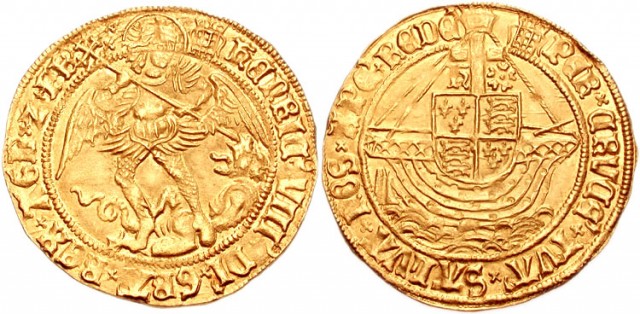
公開日19th Oct 2009
変更日時3rd Nov 2023
フランスの硬貨に雄鶏が描かれている理由
 フランスの非公式な国章はガリアの雄鶏です。このシンボルの起源は古代まで遡ります。当時、この地域はローマ人によってガリア (ラテン語では Gallia) と名付けられていました。紀元前 58 ~ 52 年、シーザーはガリア全土を征服し、3 つに分割されたローマの属州としましたが、それでもガリアであることに変わりはありません。
フランスの非公式な国章はガリアの雄鶏です。このシンボルの起源は古代まで遡ります。当時、この地域はローマ人によってガリア (ラテン語では Gallia) と名付けられていました。紀元前 58 ~ 52 年、シーザーはガリア全土を征服し、3 つに分割されたローマの属州としましたが、それでもガリアであることに変わりはありません。
ローマ人には、雄鶏を表すのに使われる「ガルス」という単語もありました。発音が同じだったので、誰もがガリア語(「o」ではなく「a」で発音)はガルスから来ていると考えました。
西暦 6 世紀、フランク人と呼ばれるゲルマン民族がやって来て、ローマの属州を征服しました。彼らは新しい国家のエリートであり、支配した場所にその名前を借りました。しかし、雄鶏は依然としてこの国のシンボルでした。
16 世紀には、この名前を古代ガリアと関連付ける人が増え、非公式のシンボルになりました。フランス革命では、このシンボルは古代ガリア人、つまり人民と関連付けられ、フランク人は貴族と見なされました。これ以降、雄鶏はマリアンヌの女性化とともにフランス共和国の公式シンボルとなりました。
雄鶏は、1898 年、第三共和政時代に、新しい 20 フラン金貨にふさわしいと考えられました。これは、1898 年にジュール クレマン シャプランによってまれに試作され、1899 年に発行されました。これは「天使」に取って代わり、縁にDIEU PROTÉGÉ LA FRANCE または LIBERTE EGALITE FRATERNITE と記され、1914 年まで製造されました。

10フラン硬貨にも使用されました。ルースター硬貨はヨーロッパ全体で最も人気のある硬貨の1つでした。当時のフランスフランはヨーロッパで最も重要な通貨でした。これらの硬貨の生産は、第一次世界大戦が始まった1914年に中止されました。
国民は戦争遂行のために金貨を寄付するよう求められ、最も人気のあるプロパガンダポスターの一つには、金貨の中の雄鶏が動き出し、パニックに陥ったドイツ兵を襲うという内容のものがある。
私たちのブログがお気に召しましたか?メール通知にサインアップしてください
フランスのコインを見る
Coin Encyclopedia検索
最新記事
ラージセントは1793年から1857年にかけて鋳造された1セント銅貨で、アメリカ合衆国で最初の公式硬貨の一つです。代表的な種類には、リースセントとチェーンセントがあります。ラージセントの種類、価値、そして歴史を学びましょう!
11th Jul 2025
ハードタイムズ・トークンは、1830年代の経済不況時にアメリカの民間企業によって発行された非公式のコインです。ハードタイムズ・トークンの歴史、反骨精神あふれるデザイン、そしてその価値について、ここで詳しくご覧ください。
18th Jun 2025
大統領ドルは、2007年から2020年までに発行された、すべての故大統領を描いたアメリカの硬貨です。このガイドでは、大統領ドルの背景、詳細、そして価値ある種類についてご紹介します。
5th Jun 2025
記事のカテゴリ
Collection of articles providing lots of useful information on coins through the ages.
30記事数


